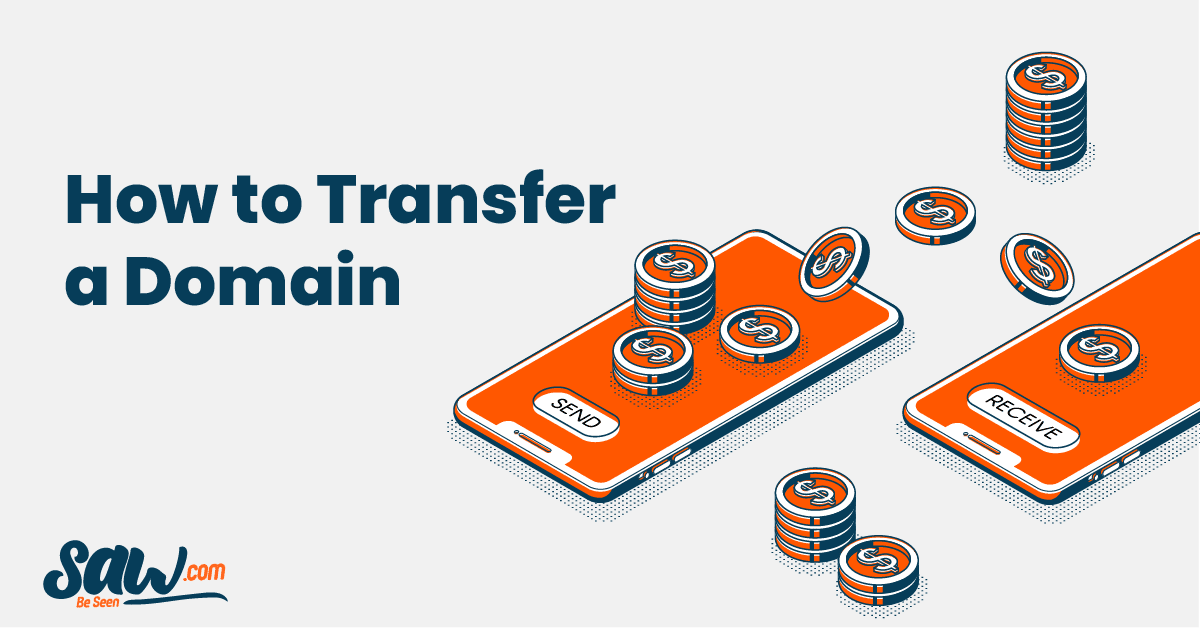Are you planning to buy a domain from someone and switch your domain registrar? Or maybe you just want to transfer a domain to a new registrar. Whatever the reason, transferring a domain can seem like a daunting task. But don’t worry; we cover everything you need to know.
In this blog, we’ll provide you with a step-by-step guide about how to transfer a domain with ease. From understanding the basics of a domain transfer to finalizing the process, we have detailed everything for you. We’ll also answer some commonly asked questions related to domain transfer so that you can make an informed decision.
Be sure to check out our registrar specific guides.
Step 1: Unlock Your Domain
To successfully transfer a domain, you must first unlock it with your current domain registrar. Log into your dashboard and navigate to your domain settings to unlock it. Verify all contact info is correct and updated before initializing the domain name transfer process. Domains are locked to prevent unauthorized transfers.
Step 2: Obtain the EPP/Auth Code
The EPP (Extensible Provisioning Protocol) or Auth-info (authorization-information) code is a unique code required to initiate the transfer. It serves as a password for your domain. Request the code from your current registrar.
Step 3: Choose the Right Registrar
Research and select a new registrar that meets your needs. Consider factors such as price, customer support, and whether or not they offer web hosting services.
- Pricing: Compare the transfer fees and renewal rates of different registrars.
- Customer support: Look for registrars with responsive and knowledgeable customer support teams.
- Two-factor authentication (2FA): This security feature ensures you’re the account holder by sending a text message to your phone or using an app like Google Authenticator to prevent unauthorized account access. Not all registrars offer this option.
- Additional services: Some registrars offer additional services like web hosting, email hosting, and SSL certificates. If you need these services, choose a registrar that provides them.
- Ease of use: The registrar’s platform should be user-friendly, especially if you’re new to domain management.
If you’re already established with a registrar you want to use, skip this step.
Step 4: Initiate the Transfer Request
Once you’ve selected a new registrar, create an account and start the domain transfer process. You will be prompted to enter the auth-code you obtained earlier.
Step 5: Confirm the Transfer
Your current provider will send a confirmation email to verify that you initiated the transfer. Click the link in the email to confirm.
Step 6: Wait for the Transfer to Finish
Domain transfers may complete within a few hours but could also take up to 10 days. Be patient and monitor your new registrar’s account for updates. Some registrars allow their clients the option to “release” the domain name and instantly transfer the domain to the registrar of their choice. If you don’t see this option, you can create a support ticket and request it.
Tips for a Smooth Domain Transfer Experience
- Ensure your domain is eligible for transfer. ICANN rules state the domain must be at least 60 days old and not within 60 days of a previous transfer. Every time you transfer or renew a domain, there is a 60-day change of registrant lock.
- Disable WHOIS privacy protection before initiating the transfer, as some registrars may require this step.
- Make sure your domain does not have any unpaid fees or pending disputes.
- Keep track of your EPP/Auth code. Don’t share it with anyone other than the new registrar. Keep in mind copying and pasting the code may sometimes include unwanted spaces, rendering the code invalid. Some registrars won’t immediately alert you to this, forcing you to wait until five days later when they do the transfer to realize the mistake.
- Double-check that your email address is accurate, as it’s crucial for receiving transfer confirmation emails.
Potential Pitfalls to Watch Out For
- Transfer lock: If the domain was transferred to a different registrar within the last 60 days, you’ll have to wait to start the transfer to a different registrar. Check the domain’s status and ensure it’s eligible for transfer.
- Incomplete contact information: Inaccurate or incomplete contact information can cause delays or even prevent the transfer from going through. Update your contact details before starting the transfer process.
FAQs
What is a domain transfer and why do you need it?
A domain transfer is moving a domain name from one registrar to another for varying reasons, such as better deals and customer service. Check eligibility and authorization codes before initiating the process.
How to check if your domain is eligible for transfer?
To ensure a smooth domain transfer, check if your domain meets the registrar’s eligibility criteria. Factors like recent transfers, holds, or locks and specific extension rules can impact eligibility. Taking the time to confirm eligibility beforehand can prevent delays and complications during the transfer process. Not all registrars support all domain extensions, so it’s important to check that the new registrar will accept your domain extension. Pay special attention to the pricing, as the initial transfer price may be low to lure you in and surprise you at year two and beyond.
How long does it take to transfer a domain?
The duration of a domain transfer varies depending on factors like the registrar and extension. It can range anywhere from a few hours to 10 days, involving steps like unlocking the domain, obtaining an authorization code, and verifying contact details. Be aware of potential transfer fees by registrars. Transfer fees are generally equal to one year’s domain registration.
What is an EPP code, and how do you get it for transfer?
An EPP code is a unique code assigned to your domain by its current registrar that you’ll need to transfer it. The process for obtaining the code varies per registrar, but it’s typically available through their account management system or customer support team. Some registrars may require extra steps like disabling privacy protection before giving the EPP code.
What is the role of the Domain Name System (DNS) in domain transfer?
DNS translates the domain URL into IP addresses and must be updated during a domain transfer. Accurate DNS settings are crucial to avoid website downtime or disruption. DNS propagation takes up to 48 hours, so plan accordingly. Consult your hosting provider or registrar if unsure about DNS and domain transfer.

